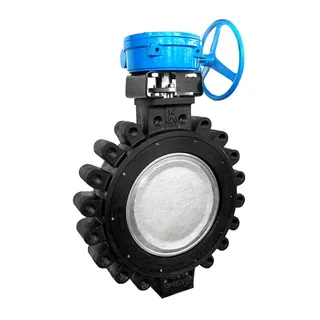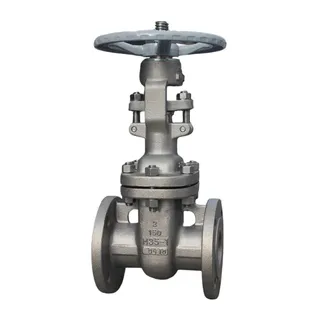In industrial production, safety valves play a crucial role. They act like the guardian of equipment, devices, and pipelines, releasing excess pressure in time when the pressure exceeds the set range, ensuring the safe operation of the system. However, safety valves often encounter the obstacle of leakage during use. This not only leads to unnecessary loss of medium but may also pose serious threats to the normal operation of equipment and the safety of personnel. So, how exactly does safety valve leakage occur? And how can we effectively deal with it? This article will provide a detailed explanation.
To effectively deal with safety valve leakage, we first need to deeply understand the common causes of leakage. Next, let us analyze the common causes of safety valve leakage so that we can better find solutions.
The sealing surface of a safety valve is one of its core components. It needs to maintain a high level of integrity and smoothness to effectively prevent medium leakage. But in actual operation, impurities such as oxide scale, limescale, and debris often come uninvited, falling onto the sealing surface between the valve disc and the valve seat. These seemingly insignificant impurities are like carving tiny grooves on the sealing surface, destroying its integrity, causing microscopic gaps between the originally tightly fitted disc and seat, allowing the medium to leak through. It is like a door that was originally tightly closed being blocked by some paper scraps, making it impossible to close completely, and letting wind and sound pass through the gaps.
Even if there are no impurities interfering, the sealing surface of a safety valve may still be damaged for various reasons. On one hand, erosion and wear from the medium are the “natural enemies” of the sealing surface. When the medium flows through the safety valve at high speed, it exerts strong impact and friction on the sealing surface, just like water continuously scouring a riverbed, which over time develops pits and uneven areas. On the other hand, corrosion can also erode the sealing surface. Especially when the medium is corrosive, the metal material of the sealing surface will gradually be corroded, becoming pitted and fragile. In addition, during assembly, improper operation, such as excessive force or inaccurate positioning, may also lead to scratches, pits, or other damage to the sealing surface, affecting its sealing effect. Although the sealing surfaces of commonly used safety valves are made of metal materials with certain strength and hardness, it is difficult for metal sealing surfaces to achieve complete leak-free performance under the action of medium pressure. Therefore, regular inspection and replacement of sealing surface materials are required to ensure sealing performance.
The spring is one of the key components of a safety valve. It is responsible for pushing the valve disc open when the pressure reaches the set value and closing the valve disc when the pressure drops, thus realizing the automatic control function of the safety valve. However, the spring may have performance issues due to various reasons. If the spring is overloaded beyond its capacity, it may fail and not function properly. In addition, corrosion can also damage the spring, reducing its elasticity, like a corroded spring, its rebound ability becomes poor and cannot bounce back as strongly as before. High-temperature environments also affect the spring. Heat can cause the spring to relax, like a spring that has been heated, reducing its elasticity, thereby lowering the set pressure. As a result, the safety valve may open prematurely before reaching the specified pressure, or fail to close normally, causing leakage.
Factors such as the installation position, direction, and tightening force of the safety valve, which may seem simple, have a crucial impact on its sealing performance. If the installation position is incorrect, for example, if the safety valve's outlet pipeline is too long, too heavy, and unsupported, it will affect the alignment inside the valve, causing the sealing surface between the valve disc and seat to fail to fit tightly, leading to leakage. Similarly, incorrect installation orientation can also have serious consequences. Most safety valve manufacturers prohibit horizontal installation, because horizontal installation may lead to fluid accumulation, poor discharge of deposits, and the valve stem leaning to one side of the guide surface. When it closes again after discharge, the sealing surfaces cannot align tightly, causing leakage. In addition, insufficient or uneven bolt tightening at the mating surface will result in poor sealing, like a loosely screwed bottle cap, allowing liquid to leak out easily. During assembly, if concentricity of parts is disrupted or internal moving parts are stuck, leakage may also occur.
The environmental conditions where the safety valve is located also affect its sealing performance. High temperatures not only cause the spring to relax but may also cause sealing materials of the safety valve to age, deform, or fail. For example, some rubber sealing materials become hard and brittle at high temperatures, losing elasticity and failing to seal effectively. Corrosive media are especially detrimental, causing corrosion to sealing surfaces, springs, and other materials, reducing service life and sealing performance. In addition, vibration and shock can damage safety valves, possibly loosening or damaging parts and affecting sealing. For example, safety valves located next to large machinery may experience bolt loosening due to mechanical vibrations, causing leakage.
Before discussing solutions for leakage, it is necessary to classify the types of leakage and master the corresponding detection methods. Only by understanding the type and severity of leakage can we formulate scientific and reasonable solutions.
Safety valve leakage can be divided into two types: permissible leakage and fault leakage.
Permissible leakage: This refers to micro-lift safety valves that may have minor seepage at normal working pressure due to microstructure of the sealing surface. Such seepage is allowed within a certain range and does not affect the safe operation of the equipment.
Fault leakage: This is caused by damaged sealing surfaces, spring fatigue, or other reasons. This leakage usually exceeds the permissible range and requires attention and prompt handling.
To accurately determine whether a safety valve is leaking and the degree of leakage, scientific detection methods should be used. Common methods include bubble detection and ultrasonic testing.
Bubble detection: A simple and intuitive method. Apply soap water or other foaming liquid around the sealing surface of the safety valve, and observe whether bubbles are produced to determine if leakage exists. The size and number of bubbles can roughly indicate the severity of leakage.
Ultrasonic detection: A more precise tool that detects micro-leakage inside the valve by emitting and receiving ultrasonic signals.
These methods can quantify the leakage rate and provide a basis for subsequent maintenance and servicing.
Safety valve leakage affects not only normal operation but also safety. Timely and accurate solutions are therefore essential. The following introduces detailed strategies for different types of leakage problems, helping maintain and manage safety valves for reliable operation.
For leakage caused by impurities, the solution is simple and direct, remove the debris and dirt from the sealing surface. During boiler shutdown for major or minor repairs, perform a safety valve pop test first. If leakage is found, disassemble and repair after shutdown. If leakage is found during post-startup pop tests, it is likely caused by impurities. After cooling for a while, perform another pop test, allowing the medium flow to flush away the impurities.
For sealing surface damage, solutions depend on the specific situation. If the sealing surface material is poor and hardness is low, machine the original surface and rebuild it with overlay welding according to drawings to improve hardness. Ensure machining quality: any cracks or pores must be removed and re-machined. Newly machined disc and seat must meet drawing requirements. If damage is caused by poor maintenance or inadequate grinding of the disc and seat, repair by grinding or machining followed by grinding. During re-grinding, use manufacturer-recommended flatness and inspect or grind regularly to ensure sealing performance.
If the spring has failed due to overload or corrosion, replace it promptly. When replacing, select the correct spring type and specification to meet operational requirements. For high-temperature environments causing spring relaxation, adjust the set pressure or use high-temperature-resistant spring materials. Manufacturers usually provide temperature correction factors, which can be used to adjust the safety valve for normal operation under high temperatures.
For leakage caused by improper installation position, orientation, or tightening force, recheck the installation and adjust according to correct methods. If the outlet pipeline is too long, heavy, or unsupported, use flexible supports, expansion joints, or other thermal compensators to eliminate thermal stress and ensure valve alignment. For non-vertical installation, if regulations allow, use O-ring-sealed safety valves instead of metal-to-metal types to solve leakage. During installation, strictly follow the safety valve installation manual, ensuring uniform bolt tightening, proper concentricity of parts, and flexibility of internal moving components.
For high-temperature-induced aging, deformation, or failure of sealing materials, select high-temperature-resistant materials or apply insulation to reduce operating temperature. For corrosion caused by corrosive media, use corrosion-resistant materials for sealing surfaces and springs, or apply protective coatings. For vibration or shock causing loose or damaged components, adopt vibration-damping measures such as installing dampers or adjusting equipment layout. Regularly inspect valve components to detect and correct looseness in time.
Effective preventive measures can significantly reduce leakage incidents, ensure long-term stable operation, and reduce maintenance costs and safety risks. The following describes preventive measures in detail.
Regular maintenance and calibration are key to preventing leakage. By inspecting sealing surfaces, springs, and other key components, potential problems can be detected and handled promptly, extending service life and reducing leakage. Calibrate the set pressure to ensure normal operation within the specified range. Generally, at least one comprehensive maintenance and calibration per year is recommended. For harsh environments or high-pressure valves, increase frequency appropriately.
During design and manufacturing, reasonable material selection and optimized structural design are crucial. Use corrosion-resistant, high-temperature-resistant, and wear-resistant materials for sealing surfaces and springs to improve corrosion resistance and service life. Optimize valve structure, such as special knife-edge sealing or O-ring designs, to eliminate deposits and fixed particles and enhance sealing. For valves exposed to vibration and shock, design can include damping and anti-loosening features.
During installation and operation, strict adherence to standards is fundamental. Installers should receive professional training, understand installation requirements and operating methods, and ensure correct position, orientation, and tightening force. Operators should follow operating procedures, avoid overpressure or frequent opening and closing, reducing impact and wear. Daily inspections should be strengthened to detect and handle abnormalities promptly.
Safety valve leakage is a complex and important issue involving structure, materials, operating environment, and operational standards. Only by understanding the causes of leakage, adopting scientific detection methods, applying effective solutions, and strengthening preventive measures can sealing performance be ensured, guaranteeing safe and stable industrial operations. This article hopes to provide helpful reference and guidance for handling safety valve leakage issues.



